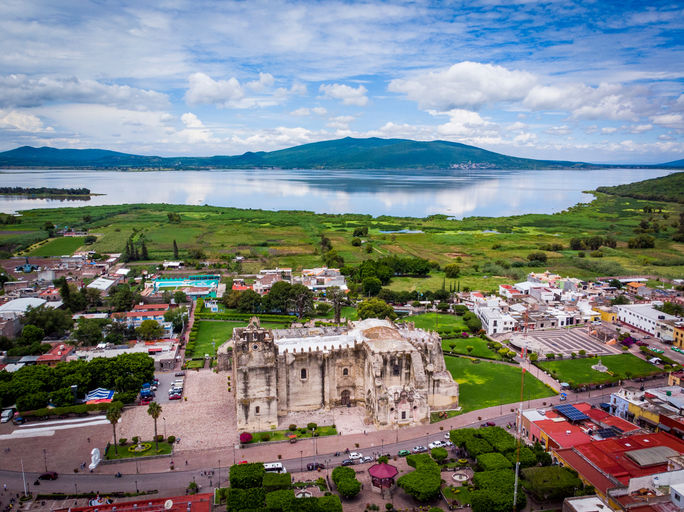
The Convent of Yuriria. (Photo Credit: Guanajuato Ministry of Tourism)
To know Mexico means knowing its heart and that begins with a journey to Guanajuato, the center of Mexico also considered the ��heart of Mexico�� �C where ancient, old and modern Mexico converge.
It is in this mountainous and majestic region that San Miguel Allende is found, a colonial art town well-known to international visitors for its colorful allure and sophisticated cuisine. But few have visited the many other enclaves of Guanajuato, whether its notable wine regions, its many historic cathedrals, convents and monasteries, its magic towns, odd museums and revolutionary outposts, or living ghost towns that were the focus point for some of the world��s most productive silver mines.
Consider that Guanajuato��s capital city joined the burgeoning list of UNESCO World Heritage sites in 1988 and remains one of only 35 such destinations in Mexico. Guanajuato City, founded by the Spanish in the 1600s for its generous mineral deposits, became a thriving metropolis by the 18th century.
Today it is much more than that and tells tales of wealth, poverty, pandemics, conquests, revolution and resurgence in surprising and compelling ways that require exploration. Visitors will not find crowds here, nor the taint of overtourism. But they will find magic, artful expression and cultures reaching back to the early centuries preserved in traditions, architecture, unusual museums and some surprising local comforts.
Guanajuato City
Guanajuato City is the capital of the state and known for being the birthplace of Diego Rivera (with a museum there to match) and houses a few surprising attractions, including an ossuary of gruesomely preserved mummies so stunningly expressive in their death moments they made it into a noted short story by Ray Bradbury in 1970, ��The Next in Line.��
The city marks the center of state government just over four hours from Mexico City by car, and striking in its vibrant baroque architecture and kept cobblestone pathways. Founded by the Spanish in the sixteenth century because of its silver supply, tourable tunnels beneath the streets echo the spirits of the time.
Visitors wander the centuries-old narrow streets above �C most notably the Calle de Sope?a where they partake in romantic traditions within an urban passage just two feet wide.
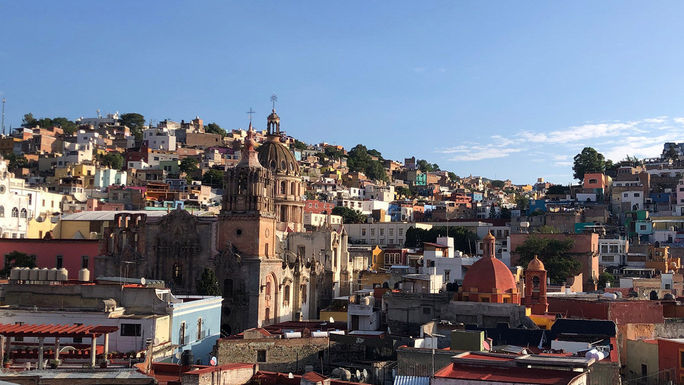
The early morning sun shines on central Guanajuato City, as seen from the roof of the Edelmira Hotel Boutique. (Photo by Paul Heney) (Photo by Paul Heney.)
During the 17th and 18th centuries, the Catholic Church sent priests to Guanajuato City to convert the native population and build some of the 15 convents, cathedrals and churches one can find there now.
But it is the Museum of the Mummies that gets the most attention in these parts. There, 100 mummies displayed standing upright, unwrapped and in their death poses, create a macabre spectacle of wonder and preserved history. Some skeletons reflect various years of cholera pandemics, others natural deaths that came too early or too late.
Desiccated skulls wax peaceful on some, or divulge horror on others �C all well preserved from the mineral-rich soil. It is said the original ossuary was created in 1865 when policies dictated cemetery fees and taxes and families could no longer afford to keep their loved ones in the ground. Today that coffin is a long glass case of curiosities.
Beyond the Museum of the Mummies find the Teatro Juarez, the city��s neoclassical opera house that took three decades to construct before opening in 1930.
Another big attraction for the city is the annual International Cervantino Festival that takes over the town for most of October and celebrates the life of Spanish writer Miguel de Cervantes Saavedra �� famous for his epic work, Don Quixote.
Fans of the paranormal will want to check out Calle de Truco (trickster or devil). This street is said to be haunted, and walking it by night could result in an unexpected encounter in Guanajuato folklore.
The street is rumored to be haunted by the ghost of Mart��n, a gambler who bet his wife in a casino game on that street and lost, it is said, to the devil. It is alleged that he committed suicide and still travels that street in penance. It's also believed that one who walks this way at night, as long as the lamps are lit, will have years of good luck.
Dolores Hidalgo
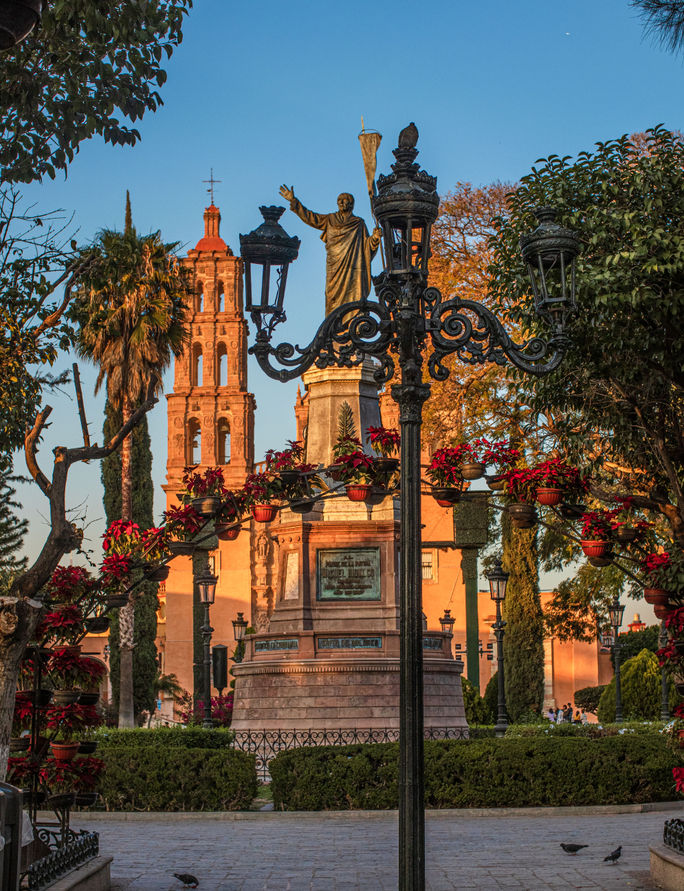
Dolores Hidalgo, Mexico. (Photo Credit: Guanajuato Ministry of Tourism)
Head to Dolores Hidalgo, just over an hour��s drive from Guanajuato City, for some recent history, circa 1810. That is because the city is known as "The Cradle of Independence" in Mexico.
Father Miguel Hidalgo y Costilla, a parish priest in the town of Dolores, started pushing for Mexican independence from Spain in the early 19th century, inspiring the state's patriots and clergy to join him and rallying an army of 6,000 troops in 1810. Following multiple triumphs he was captured and executed but his cause persisted, and in 1821 Mexico gained its independence.
Today one can steep in this history at various museums in the city, or one can eat ice cream �C make that "nieves" ice cream �C more of a sorbet?�C that is dairy-free and available in all manner of odd flavors including shrimp, sweet corn, and cactus. The magic town located within a three-hour drive from San Miguel Allende and or Guanajuato City is also the place to experience Otom�� cuisine.
The Otomi people were the earliest settlers of these Mexican highlands, arriving several centuries before the Common Era, and masters of agriculture in their day. Today, preparation still uses traditional tools from the Otom�� culture such as the metate (milling stone), molcajete (volcanic mushing bowl) and clay pots to prepare food. Creole corn is a stated ingredient in these meals, supplemented with indigenous greens, cactus, creole squash, beans, and a bit of home-raised animal protein.
Other highlights in this preserved colonial town of 67,000 or so residents can be found in the shopping to be done: the artisanal Talavera pottery and Mayolica ceramics stand out in brilliant coloring, all crafted using centuries-old techniques.
And then there is the wine. Dolores Hidalgo is a key wine producer in Mexico due to an altitude that averages 6,500 feet and rainy summers that balance the strong sun during the growing season. A stop at the town��s wine museum adds input to the award-winning wines to be tasted that include such grapes as Malbec, Merlot, Syrah and Tempranillo that comprise nearly three-quarters of the state��s wine output. White varieties include Semillon, Chenin Blanc, and Viognier.
The Wine Route
Guanajuato is the third-largest wine region in Mexico and is home to more than 40 wineries. Guanajuato's wine road or Ruta del Vino offers over two dozen wineries worth the taste, time and trouble that are easily visited within in a few scenic day trips from San Miguel de Allende, Dolores Hidalgo or Guanajuato City.
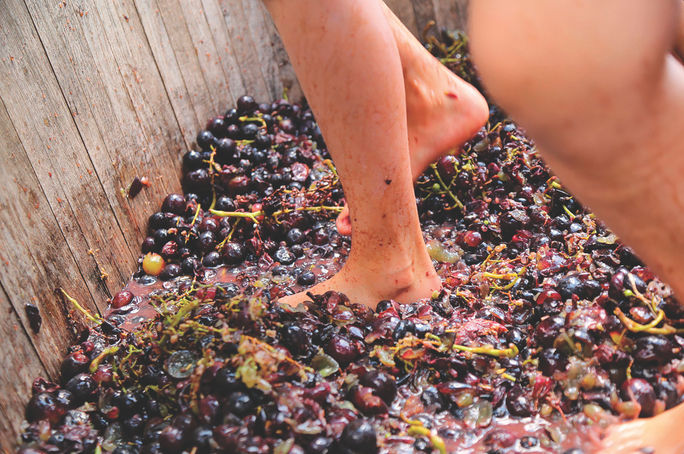
Vendimia. (Photo Credit: Guanajuato Ministry of Tourism)
Though this wine region dates back only two decades, Mexico's vines are actually quite old. They were initially planted in the 1500s by the Spanish colonial authority. However, winemaking was forbidden to anyone who was not in high authority within the church. Once those edicts were removed, Guanajuato's altitudes and chilly evenings were seen as ideal conditions for grape cultivation.
The Ruta del Vino splits into five routes in this region that take in small Magic Towns and picturesque villages. Visitors will find wineries there that have been resurrected with local age-old customs but also employ cutting-edge experimental techniques.
Cheese Route
Wine is not the only treat to be sampled in plenty along the hills and dales of Guanajuato��s roads.
There are numerous cheeses found in this region. More than ten types of sheep, cow, and goat cheese �C some aged, some smoked, and of course, fresh cheese?�C are available to be experienced by tourists in the city of Apaseo...and that includes cheddar ice cream. Often cheese tastings fold into wine tours and itineraries available through the state��s tourism office.
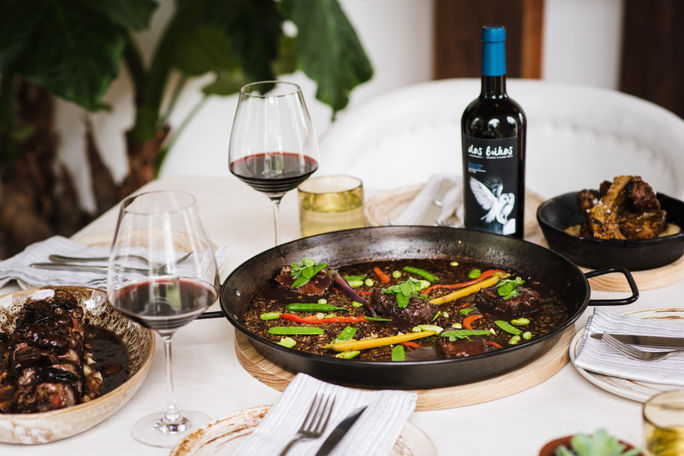
Dos Buhos. (Photo Credit: Guanajuato Ministry of Tourism)
Mezcal & Tequila Routes
Few visitors to Mexico are aware that the first place to produce mezcal was Guanajuato. Mezcal comes from the same plant?�C the agave plant?�C as tequila, but it is not the same. Mezcal is prepared by fermenting and cooking one or more of the thirty various species of agave plants, whereas tequila is made exclusively from the blue Weber agave plant. Thus, tequila is a sub-genre of mezcal.
The distinctive difference is in the smokey flavor of mezcal that comes from roasting agave plants and the classes of product and taste are further divided according to how the spirit is stored, aged, infused or distilled.
Day trips to the towns of San Filipe or San Luis de la Paz in northwest Guanajuato bring access to haciendas that have been producing mezcal for more than two centuries.
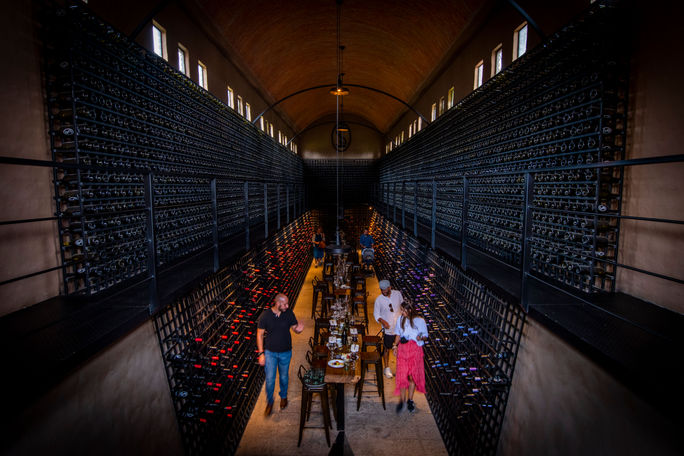
Vinedo Santa Trinidad. (Photo Credit: Guanajuato Ministry of Tourism)
Meanwhile, Guanajuato also stands as a ��designation of origin�� in Mexico for tequila and several cities in the southwest region of the state?�C namely Abasolo, Cuer��maro, Huan��maro, Manuel Doblado, P��njamo, Romita, and San Francisco del Rinc��n?�C are home to various tequila companies producing well-known brands. Visitors can see the artisanal production process and explore tastings from beginning to end at the P��njamo Tequila facility and the Casa del Tequila by Corralejo.
For Guanajuato, gastronomy is just one prong in at least nine tourism segments the state tourism office has identified, according to its minister, Juan Jos�� ?lvarez Brunel. He adds that history is a top component in all aspects of tourism in Guanajuato with pyramids, monuments and important archeological sites dating back 2500 years mostly within a 2.5-hour drive of key cities.
For the latest travel news, updates and deals, subscribe to the daily TravelPulse newsletter.
Topics From This Article to Explore